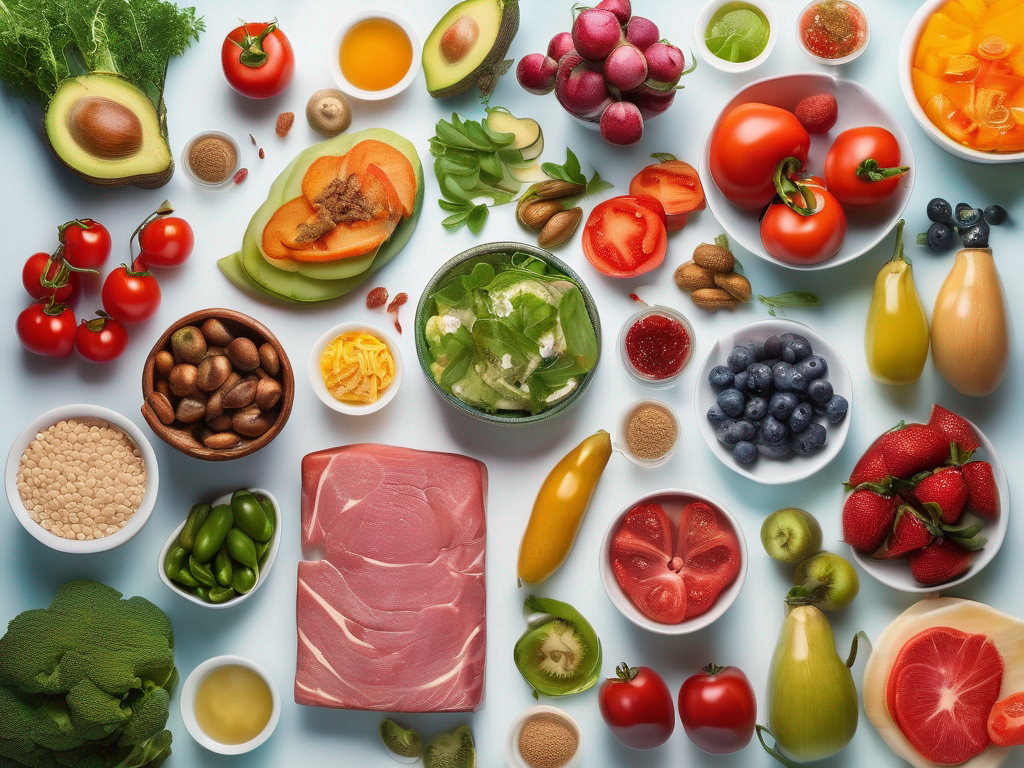
The Shelf Life of Opened Canned Cat Food: What You Need to Know
Get Your Free Food Safety Cheat Sheet
30 most common foods with instant answers. Print it and stick it on your fridge—completely free!
The Shelf Life of Opened Canned Cat Food: What You Need to Know
Canned cat food is a convenient and nutritious option for your feline friend. However, once you open a can of cat food, you may wonder how long it will stay fresh and safe for your pet to consume. In this post, we will explore the shelf life of opened canned cat food, provide tips on proper storage, and discuss food safety considerations.
Understanding the Shelf Life of Opened Canned Cat Food
Canned cat food typically has a relatively long shelf life, especially when compared to other types of pet food. However, once you open a can of cat food, the clock starts ticking on its freshness and safety. Here are some key points to keep in mind:
Factors Affecting Shelf Life
Several factors can impact the shelf life of opened canned cat food, including:
- Ingredients: The quality and type of ingredients used in the cat food can affect how long it stays fresh.
- Storage: Proper storage plays a crucial role in maintaining the quality and safety of the cat food.
- Temperature: Storing cat food at the right temperature can help extend its shelf life.
- Exposure to Air: Once opened, the cat food can be exposed to air, leading to potential spoilage.
General Guidelines for Shelf Life
While there is no one-size-fits-all answer to how long opened canned cat food lasts, here are some general guidelines to keep in mind:
- Refrigeration: Once opened, canned cat food should be refrigerated promptly. It is recommended to use the food within 2-3 days.
- Quality Check: Always inspect the cat food before serving it to your pet. Look for any signs of mold, discoloration, or off smells.
- Expiration Date: Check the expiration date on the can of cat food. Even if the food looks and smells fine, it is best to adhere to the expiration date for safety reasons.
Tips for Properly Storing Opened Canned Cat Food
Proper storage is key to maintaining the freshness and safety of opened canned cat food. Here are some practical tips to help you store the cat food effectively:
Storage Containers
- Transfer Leftovers: If you have leftover cat food after opening a can, transfer it to an airtight container before refrigerating.
- Label Containers: Clearly label the containers with the date you opened the cat food to track its freshness.
Refrigeration
- Temperature: Store the opened canned cat food in the refrigerator at a temperature below 40°F (4°C) to slow down bacterial growth.
- Avoid Freezing: Avoid freezing opened canned cat food, as this can alter the texture and flavor of the food.
Handling
- Clean Utensils: Use clean utensils to scoop out the cat food to prevent contamination.
- Avoid Cross-Contamination: Store the cat food away from raw meat or other perishable items to prevent cross-contamination.
Food Safety Considerations for Opened Canned Cat Food
Ensuring the safety of your pet's food is essential for their health and well-being. Here are some food safety considerations to keep in mind when dealing with opened canned cat food:
Signs of Spoilage
- Mold: Discard the cat food if you notice any signs of mold growth.
- Off Smell: If the cat food has an unusual or foul smell, it is best to err on the side of caution and not feed it to your pet.
- Texture Changes: Any changes in texture, such as excessive softness or sogginess, can indicate spoilage.
Hygiene Practices
- Wash Hands: Always wash your hands before and after handling pet food to prevent the spread of bacteria.
- Clean Bowls: Wash your pet's food bowls regularly with hot, soapy water to prevent bacterial buildup.
Conclusion
In conclusion, the shelf life of opened canned cat food can vary depending on various factors such as ingredients, storage conditions, and handling practices. By following proper storage guidelines, keeping an eye out for signs of spoilage, and prioritizing food safety, you can ensure that your pet enjoys fresh and safe food. Remember to always consult with your veterinarian if you have any concerns about your cat's diet or food safety.
Remember, your furry friend's health is a top priority, so investing time and effort into proper food storage and safety practices is well worth it. By staying informed and proactive, you can provide your cat with the best possible nutrition while minimizing the risk of foodborne illnesses.
Authoritative Food Safety References
These agencies and university labs inform every tip and health precaution we publish.
USDA FoodKeeper – Cold Storage Guidelines
Official refrigerator, freezer, and pantry timelines maintained by the U.S. Department of Agriculture.
Visit USDA FoodKeeperFDA Produce Safety Rule & Grower Guidance
Field-to-fridge handling practices that prevent contamination of fruits, vegetables, and leafy greens.
Visit FDA Produce SafetyCDC Foodborne Illness Prevention Hub
Surveillance-backed guidance on pathogens, symptoms, and steps to reduce foodborne illness risk.
Visit CDC Food SafetyUC Davis Postharvest Technology Center
University research detailing optimal storage atmospheres for produce after harvest.
Visit UC Davis PostharvestPenn State Extension – Home Food Preservation & Safety
Peer-reviewed extension bulletins on safe canning, chilling, and reheating practices.
Visit Penn State ExtensionGet Your Free Food Safety Cheat Sheet
30 most common foods with instant answers. Print it and stick it on your fridge—completely free! Want more? Upgrade to the complete guide with 70+ foods.
Scan your food directly and get instant safety info using our AI-powered camera feature.